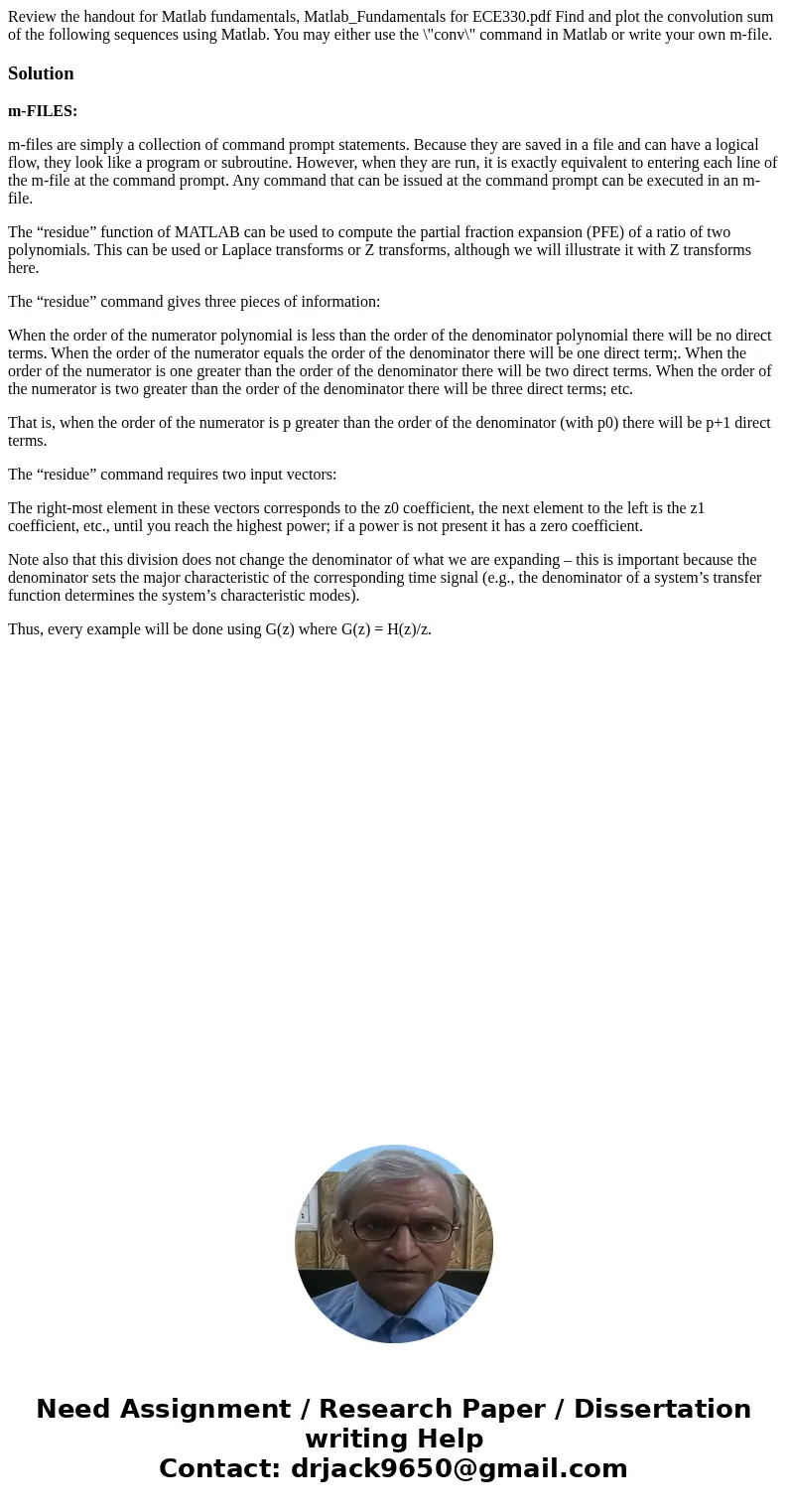Review the handout for Matlab fundamentals MatlabFundamental
Solution
m-FILES:
m-files are simply a collection of command prompt statements. Because they are saved in a file and can have a logical flow, they look like a program or subroutine. However, when they are run, it is exactly equivalent to entering each line of the m-file at the command prompt. Any command that can be issued at the command prompt can be executed in an m-file.
The “residue” function of MATLAB can be used to compute the partial fraction expansion (PFE) of a ratio of two polynomials. This can be used or Laplace transforms or Z transforms, although we will illustrate it with Z transforms here.
The “residue” command gives three pieces of information:
When the order of the numerator polynomial is less than the order of the denominator polynomial there will be no direct terms. When the order of the numerator equals the order of the denominator there will be one direct term;. When the order of the numerator is one greater than the order of the denominator there will be two direct terms. When the order of the numerator is two greater than the order of the denominator there will be three direct terms; etc.
That is, when the order of the numerator is p greater than the order of the denominator (with p0) there will be p+1 direct terms.
The “residue” command requires two input vectors:
The right-most element in these vectors corresponds to the z0 coefficient, the next element to the left is the z1 coefficient, etc., until you reach the highest power; if a power is not present it has a zero coefficient.
Note also that this division does not change the denominator of what we are expanding – this is important because the denominator sets the major characteristic of the corresponding time signal (e.g., the denominator of a system’s transfer function determines the system’s characteristic modes).
Thus, every example will be done using G(z) where G(z) = H(z)/z.

 Homework Sourse
Homework Sourse